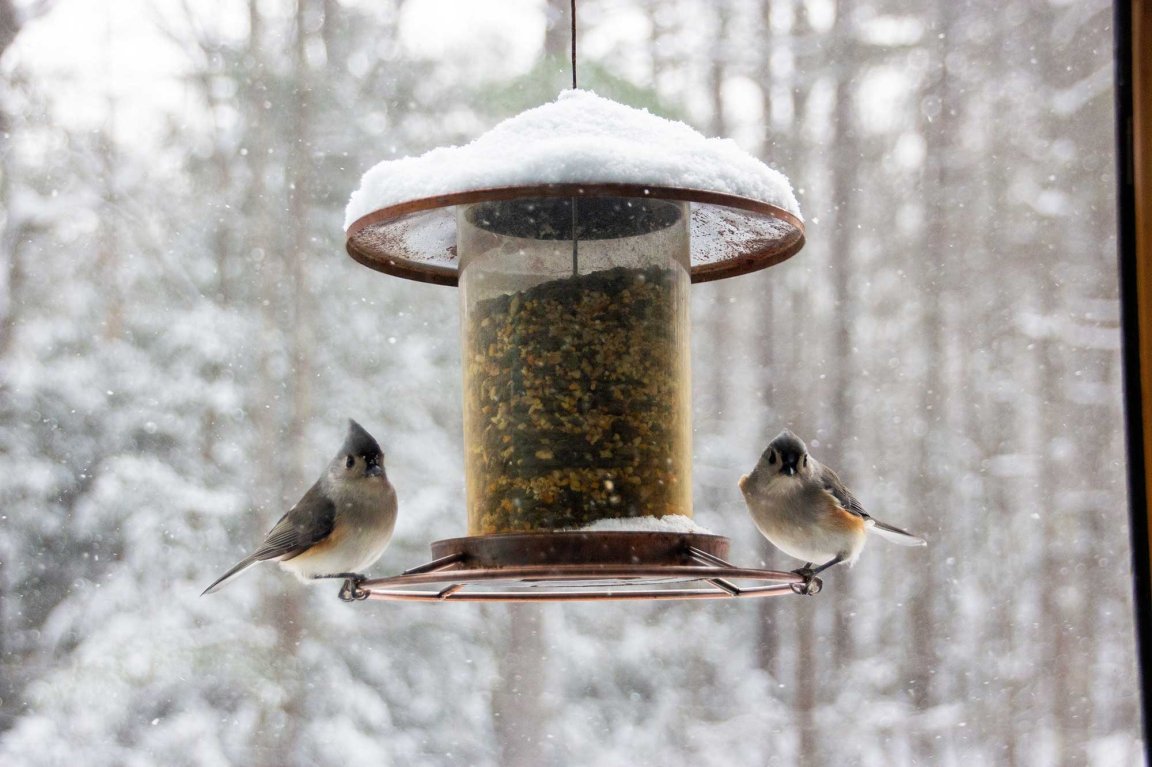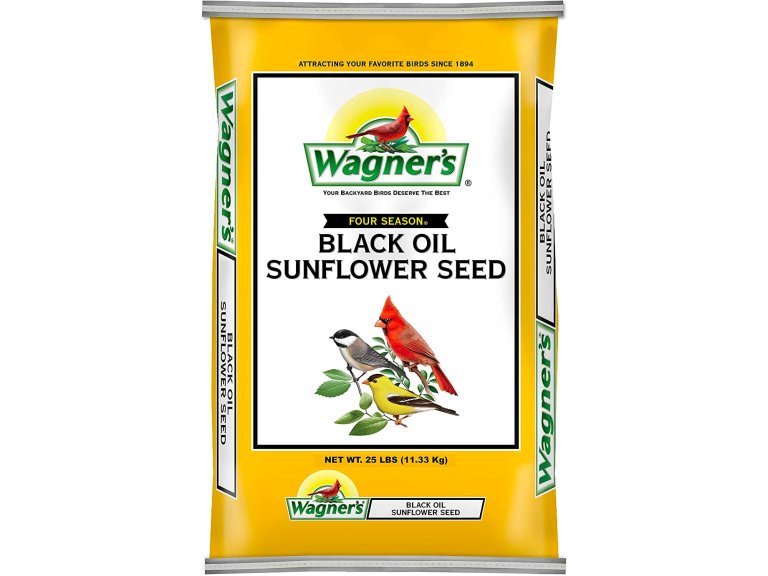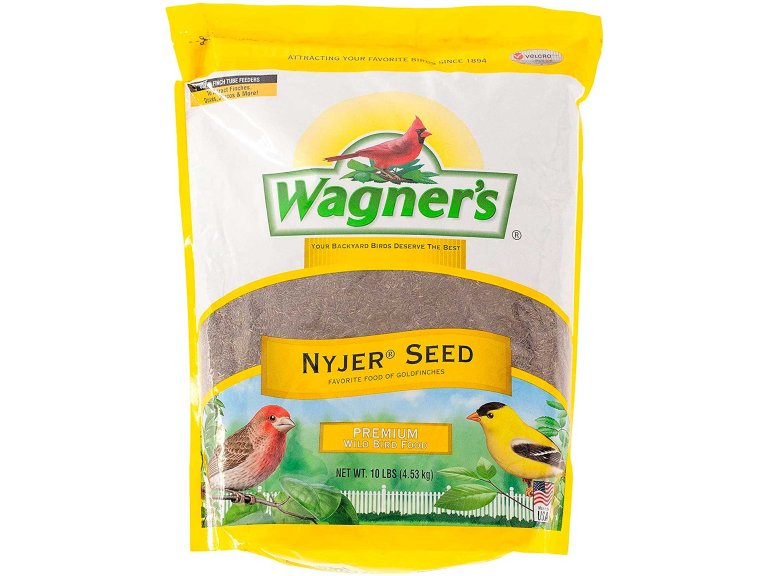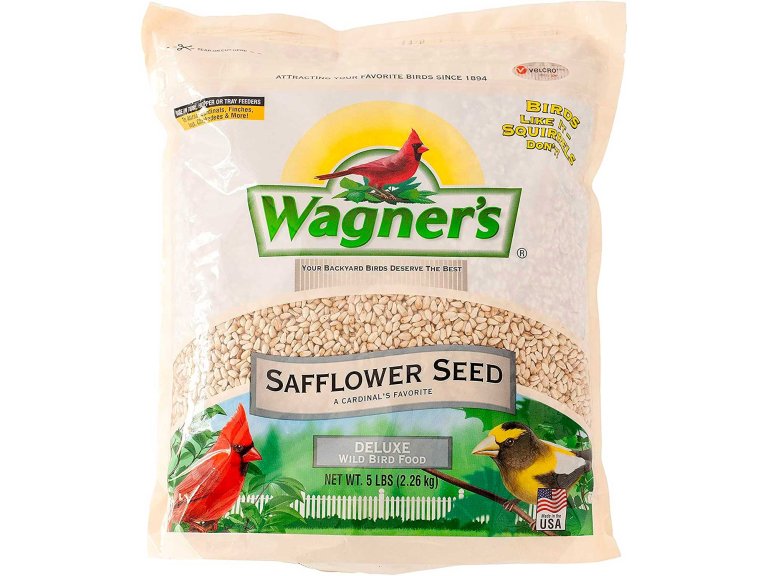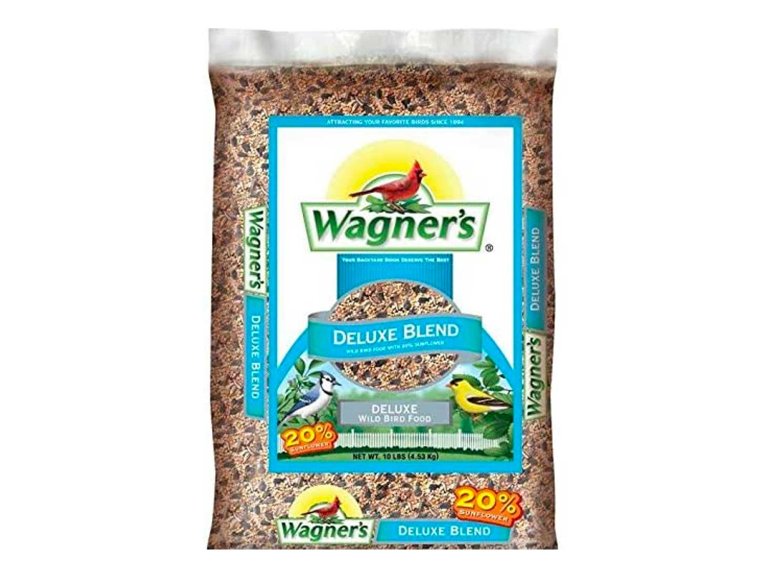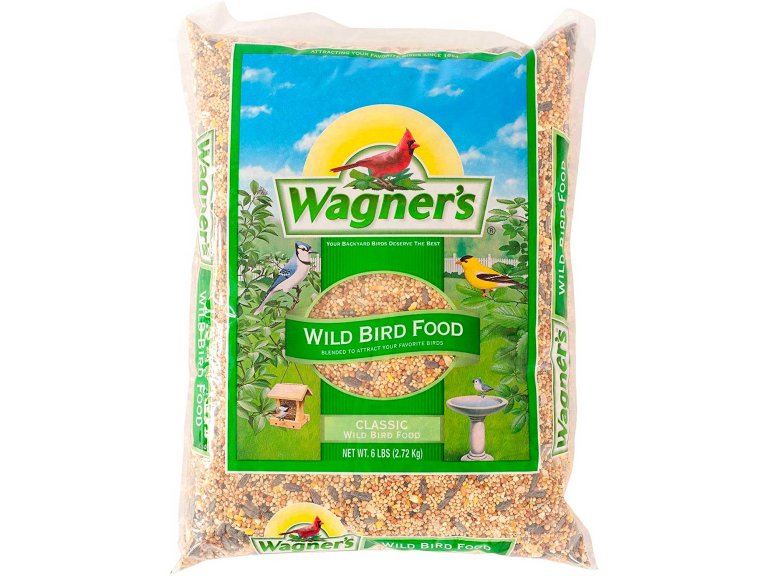We may earn revenue from the products available on this page and participate in affiliate programs. Learn More ›
- Best for Winter: Wagner’s Black Oil Sunflower Seeds
- Best for Finches: Nyjer Seed 10-Pound Bag
- Best for Cardinals: Safflower Seed Wild Bird Food
- Best for Woodpeckers: Health Outdoor Suet Cakes
- Best All-Around Mix: Deluxe Wild Bird Blend
- Best Budget: Classic Blend Wild Bird Feed
Features to consider when shopping for the best bird seed
Shopping for bird seed can be confusing, especially if you are new to the world of feeding backyard birds. That’s because there are a wide variety of bird species, and each has its own dietary wants and needs. Learn what your favorite birds like, and you can draw more of them to your backyard feeder for both their and your enjoyment.
Do you want to draw a variety of birds to a winter bird feeder?
If you were going to select one kind of bird food and feed it exclusively to birds in your backyard in winter, black oil sunflower birds seeds are the ones to choose. High in both protein and fat, they are readily available and loved by nearly every kind of bird that will visit your yard. Compared to striped sunflower seeds, black oil seeds are meatier and have a higher oil content, giving birds more nutrition and calories in every bite. They also have thinner shells, making them easier for small birds to crack.
That said, many birds like a variety of seeds in their diet, especially during the winter months when bugs, worms and other small creatures aren’t readily available. Interestingly, some prefer tiny seeds like thistle, and others love seeds as large as shelled peanuts. And some that have great appetites will eat any and all of the above!
Suet is even a preferred food of some birds, including nuthatches and several species of woodpeckers. Add a variety of different kinds of seed to suet cakes, and they’re attractive to even more birds. All that said, black oil sunflower seeds reign supreme in the backyard bird feeding world, and for beginners, feeding them to birds is the best way to get involved.
Best Winter Bird Seed: Wagner’s Black Oil Sunflower Seeds
Loved by Birds
See ItWhile black oil sunflower seeds are popular, they can be expensive. That’s especially true during years when bad weather affects sunflower crops or a high demand for ethanol for gasoline cuts into the supply. But even if it costs more, the opportunity to view birds up close while helping them through the winter is well worth the expense. Buying in bulk, like this 25-pound bag of Wagner’s, reduces the expense.
Do you want to attract colorful finches to your bird feeder?
Finches are among the most interesting birds you can draw to your feeder. That’s because of the variety of different kinds. Depending on your location, you can find finches of many different colors, from red, to purple, to gray, to bright yellow. When several species gather around your feeder at once, they make a rainbow of colors that is beautiful to behold!
While finches love sunflower seeds, they love Nyjer (commonly called thistle seed) even more. Nyjer is a small, thin, black seed from the African yellow daisy. High in oil, it is a nutritious source of energy for backyard birds and is one of the most popular types of bird seeds. Along with finches, many other species also love Nyjer, including juncos, buntings and even mourning doves.
To feed these tiny seeds, you’ll need a special feeder, since the seeds are so small, they’ll fall right through most regular bird feeders.
Best Bird Seed for Finches: Nyjer Seed 10-Pound Bag
Great For Finches
See ItThis Nyjer seed is good for drawing a variety of birds to your feeder, including finches, juncos and buntings. The seeds are so tiny that there are 150,000 to a pound, so a 10-pound bag contains roughly 1.5 million seeds for your birds to enjoy.
Do you want to attract cardinals?
Cardinals are among the most sought-after birds by people who hang bird feeders in winter. And there’s little reason why—the striking, bright-red color of the male is truly a sight to see in a drab winter landscape, and the less gaudy females have a more subtle beauty of their own. Cardinals love black oil sunflower seed, so drawing them to feeders isn’t very difficult.
However, there are some seeds that you can add to your feeder to draw in more cardinals than ever before. One of those is the safflower seed. Safflower has a thick shell that is hard for some birds to crack open, but it is a cardinal favorite. They have little trouble breaking them open. Add some to your black oil sunflower seed and you’ll almost certainly see more cardinals com visit.
Safflower seeds are also much loved by a number of other bird species, including chickadees, doves, and grosbeaks. Even better, pesky species like house sparrows and European starlings aren’t big fans of safflower, so won’t eat up as much of your birdseed.
Best Bird Seed for Cardinals: Safflower Seed Wild Bird Food
Cardinal Favorite
See ItThese safflower seeds are like those found in many popular mixes. By using them alone or mixing them with other types of bird food, you can choose which birds you are most likely to attract to your backyard feeder, making feeding birds even more fun!
Do you want to attract woodpeckers?
Woodpeckers are delightful birds that many people are thrilled to see at their feeders. There are 23 species native to the United States—from the tiny downy woodpecker that is only a few inches in length, to the giant pileated woodpecker that’s nearly the size of a crow. In between those extremes are several species that can be drawn to backyard feeders with a little effort.
Some woodpeckers will eat regular black oil sunflower seed. In fact, you’ll often see them hanging upside down on your sunflower seed feeder doing just that. But what they really like, and what will really draw them in to your feeding station, is suet. This kind of food is often sold in cakes and can be smeared on tree trunks, or sold in special suet feeders that are simply wire cages that hold the suet and birds cling on to while they dine.
Suet can be made even more attractive by adding a variety of nuts or seeds to it, and many bird seed companies do just that. From sunflower seeds to safflower seeds to peanuts, suet with additional ingredients can draw even more types of birds, including wrens, chickadees, nuthatches and titmice.
Best Bird Feed for Woodpeckers: Health Outdoor Suet Cakes
Top Choice
See ItOne thing to watch out for when shopping for suet cakes is a low melting point, because easily melted suet cakes make such a mess it makes many backyard bird enthusiasts question why they even mess with it. These no-melt, all-season suet cakes take away the mess while still providing the tasty treat birds crave.
Do you want to attract as many species as possible?
Many companies market wild bird seed blends for backyard bird fanciers to feed to their birds. Some blends are heavy on sunflower seeds, some on millet and some on other favored seeds. By knowing what birds like what seeds best, you can choose a mix that is most likely to draw more birds that you want to attract to your feeder.
To draw the biggest variety of birds to your backyard feeder, look for mixes of several seed types. But be sure and don’t leave out black oil sunflower seeds, as they are highly prized by nearly all backyard bird species and your feeder attendance will likely suffer if you feed a mix without them.
Some bird enthusiasts prefer to buy several types of seeds and make their own mix. While this might save them a little money, it can be quite messy and many find it to be too much of a hassle. Given so many companies market very good bird seed blends, there’s no reason to do any more work than learning what blend will be best for you and clicking “Buy Now” when you find it!
Best All-Around Bird Seed Mix: Deluxe Wild Bird Blend
More Variety
See ItWith black oil sunflower seeds and a variety of other general purpose seeds, this backyard blend will work nicely to attract a wide variety of wild birds to your backyard. It’s moderately priced and will also attract a variety of birds that prefer to feed on the ground, beneath a hanging or platform feeder.
Best budget birdseed: What you get for under $10
Feeding backyard birds costs, but low-quality seed or seed that aren’t preferred by many species won’t draw a lot of birds. Check which seeds a blend contains and compare that to the preferences of the species of birds that visit their yard.
Best Cheap Bird Seed: Classic Blend Wild Bird Feed
Best Value
See ItA budget blend with high-quality seeds like this one will allow beginners or seasoned bird fanciers to provide feed on a budget. Perfect for feeding through a tube, hopper or platform feeder, it is a great all-season blend.
FAQs:
The best seed mix depends on what types of birds you want to attract. For most bird feeding purposes, a good mix should have a high percentage of black oil sunflower seeds.
Nyjer seed is expensive because it takes so many seeds to make a pound (about 150,000). So comfort yourself in knowing that if your Nyjer seed costs $3 a pound, but that’s still 50,000 seeds for $1!
Most backyard birders begin putting out feed in early fall and continue until warm weather returns again in the spring. However, if you leave feed out year-round you can help some species on their way during migration and draw others all year long.
A final word on shopping for bird seed
Decide which species of birds you want to attract before you buy them the best bird seed. A blend will work, but make sure it has an abundance of the kind of seeds preferred by the species you want to see at your feeder.
